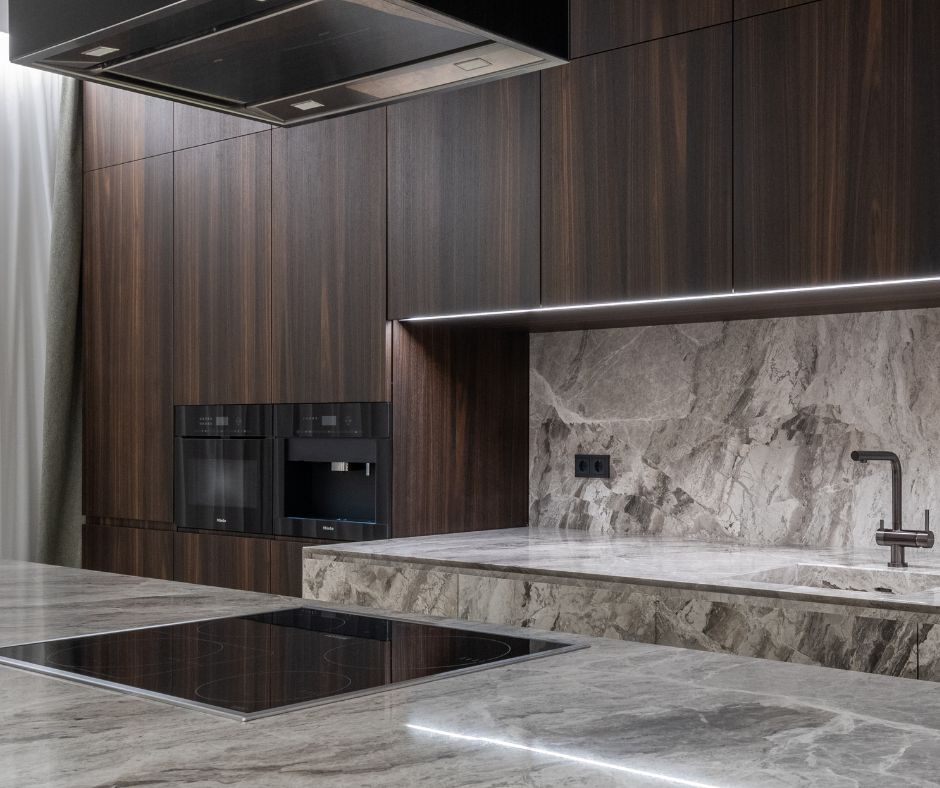Innovative kitchens are at the forefront of culinary evolution, nurturing new cooking methodologies and practices that significantly enhance the overall cooking experience. Although induction cooking technology may seem like a modern marvel, its origins can be traced back to the early 20th century. Initial demonstrations in the 1930s mesmerised onlookers, illustrating the remarkable ability to boil water using magnetic energy without any visible heat source. However, it is only in recent decades, spurred by notable advancements in technology, efficiency, and design, that induction cooktops have secured their place in contemporary kitchens, fundamentally altering how meals are prepared and savoured.
In today's culinary landscape, an increasing number of home chefs and food enthusiasts are turning to induction cooking because of its striking combination of sleek aesthetics, exceptional precision, and unmatched energy efficiency. This pioneering cooking method not only speeds up meal preparation but also revolutionises the home cooking experience, blending the science of heat management with culinary artistry in every dish created on its sophisticated, polished surface. With the appropriate induction cooktop, you can achieve cooking speeds that rival those of a microwave, allowing you to prepare delightful family meals in record time!
Mastering Flavour and Nutrition Through Precision Cooking Techniques
In contrast to traditional gas or electric ranges, induction cooktops directly heat cookware using electromagnetic energy, which is a revolutionary approach that eliminates wasted heat, prevents burnt edges, and provides unmatched control over both low and high temperatures. When you can manage heat with such accuracy, your ingredients retain a greater percentage of their natural moisture, flavour, and nutritional integrity. Whether you’re quickly flash-searing proteins, gently simmering sauces, or swiftly blanching vegetables, induction cooking simplifies the task of achieving perfect results, effectively eliminating overcooked meals and preserving precious nutrients.
Stylish and Functional Induction Cooktops: Maximising Space While Reducing Stress
In kitchens where every square centimetre is valuable, induction cooktops not only excel in performance but also captivate with their visual appeal. Their flat, smooth surfaces seamlessly blend into your countertop, contributing to a minimalist aesthetic that creates additional space for food preparation, plating, or even casual dining experiences.
Unlike traditional gas hobs, which can be bulky with grates and protruding burners, induction cooktops sit flush with the countertop surface. While ceramic stovetops may boast a sleeker appearance, they often remain dangerously hot long after cooking has concluded.
In contrast, induction surfaces cool down rapidly once the cookware is removed. The heat is generated via the magnetic interaction between the cooktop and the cookware itself, rather than the cooktop emitting heat, meaning that the glass surface retains significantly less heat. This feature not only makes cleaning safer and easier, but it also fosters a more secure cooking environment, particularly beneficial for households with children or pets who may take an interest in kitchen surfaces.
The outcome? A cooler kitchen with cleaner lines and enhanced flexibility—perfect for modern cooks who prioritise both aesthetic appeal and functional efficiency in their cooking spaces.

Your Comprehensive Guide to Selecting the Ideal Cookware for Induction Cooking
Transitioning to induction cooking may come with the bittersweet realisation that you might need to part ways with some cherished old pans. Since induction technology relies on magnetic energy for heat generation, not all cookware is suitable for this method.
For cookware to function effectively on an induction cooktop, it must be comprised of ferrous (magnetic) metals, such as cast iron, carbon steel, or magnetic-grade stainless steel. A simple compatibility test can be conducted using a fridge magnet: just place a magnet on the bottom of the pan. If it sticks firmly, you’re good to go.
When choosing new cookware, opt for pans with a heavy, flat base. This design guarantees optimal contact with the cooktop, ensuring even heat distribution, which is vital for achieving perfect browning, tender roasts, and crispy edges. Furthermore, high-quality induction cookware is engineered to resist warping over time, thereby ensuring consistent cooking performance for every dish prepared.
Although it might be challenging to say goodbye to your old favourites, consider it an upgrade. In return, you gain enhanced control, faster cooking times, and dishes that showcase even richer flavours and textures.
Essential Induction Cookware Quick Checklist: Must-Have Items for Successful Cooking
 Conduct a fridge magnet test—strong adhesion indicates induction compatibility
Conduct a fridge magnet test—strong adhesion indicates induction compatibility Prefer flat-bottom pans to ensure optimal contact and heat distribution
Prefer flat-bottom pans to ensure optimal contact and heat distribution Select cast iron, carbon steel, or magnetic stainless steel cookware
Select cast iron, carbon steel, or magnetic stainless steel cookware Avoid cookware made solely from copper, aluminium, or glass unless explicitly marked for induction use
Avoid cookware made solely from copper, aluminium, or glass unless explicitly marked for induction use Look for the induction symbol (resembling a horizontal coil or a series of loops) stamped on the base or packaging
Look for the induction symbol (resembling a horizontal coil or a series of loops) stamped on the base or packaging
Pro Tip: The induction symbol often resembles a zigzag or spring coil graphic. Spotting it guarantees cookware compatibility.
Crucial Installation Considerations for Your Induction Cooktop
Before embarking on your culinary journey with your new cooktop, several critical installation essentials must be addressed:
-
Professional Installation Is Absolutely Essential: Induction units often necessitate dedicated electrical circuits and specific clearances. It is crucial to engage professionals who comprehend these requirements for optimal setup.
-
Hire a Licensed Electrician: Wiring a high-powered induction cooktop is not a DIY task.
Discover why hiring a qualified electrician is imperative to ensure safety and compliance with electrical standards. -
Verify Your Power Setup: Some induction models draw considerable power. Before making a purchase, confirm that your wiring meets the cooktop’s specifications to prevent any complications.
Proper installation not only guarantees optimal performance but also ensures safety and longevity of your induction cooktop, offering peace of mind as you create culinary masterpieces.
Key Insights on the Benefits of Induction Cooking
Induction cooking offers a plethora of advantages beyond mere speed or safety—it is inherently intelligent. With the right cookware and a professionally installed system, you can consistently create better-tasting meals, richer textures, and healthier options, meal after meal. In modern kitchens, precision cooking is not just a preference; it has evolved into the new standard that many home cooks aspire to achieve.
Your Guide to Frequently Asked Questions About Induction Cooktops
1. What Sets Induction Cooktops Apart from Gas or Electric Alternatives?
Induction cooktops provide immediate heat control, enhanced energy efficiency, and improved safety features. Since they heat the cookware directly, meals cook more rapidly with minimal energy waste, while the surfaces remain cooler, thereby significantly reducing the risk of burns.
2. Can I Continue Using My Existing Pots and Pans on an Induction Cooktop?
You can retain your existing cookware only if it is magnetic. Cookware made from cast iron or magnetic stainless steel is ideal for induction cooking. You can easily check compatibility by placing a magnet on the base—if it adheres firmly, it is suitable for induction use.
3. Does Induction Cooking Influence the Flavour of Food?
Yes, in a beneficial manner. Because induction cooking allows for precise temperature control, you can sear, sauté, or simmer without overheating, thereby preserving the natural flavours, textures, and nutrients far more effectively compared to inconsistent gas or electric heat sources.
4. Is Special Wiring Required for an Induction Cooktop?
Most induction cooktops necessitate a dedicated electrical circuit and specific voltage and amperage requirements. It’s essential to have a professional electrician evaluate and install your wiring to ensure compliance with safety standards and to guarantee optimal performance.
The post The Secret Ingredient in Modern Kitchens: Induction Cooktops Are Changing the Game appeared first on https://cookinggods.com
The Article Induction Cooktops: The Game-Changer in Modern Kitchens Was Found On https://limitsofstrategy.com
The Article Induction Cooktops Revolutionising Contemporary Kitchens found first on https://electroquench.com

